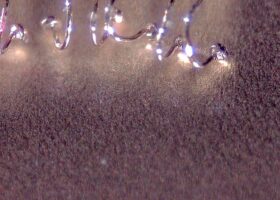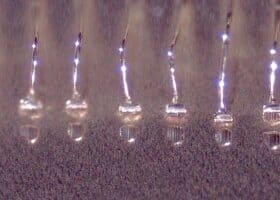Wire bonding and plasma
Wire bonding is a method used to interconnect integrated circuits or semiconductors to other components or the housing by means of thin wires (bonding wire). For this process it is of vital importance that the contact surfaces are free of impurities and residues. For this reason, atmospheric pressure plasma is used for fine cleaning prior to wire bonding to achieve better connections and thus increase quality and productivity.
Wire bonding
Ideally, wire bonding takes place on clean metal surfaces of the semiconductor component or carrier material. In practice, however, contaminations of the surface frequently occur, which can lead to non-stick on pad (NSOP) or so-called “lifts”. Both cases lead to production failures, downtimes and quality defects. By means of a selective plasma treatment prior to the bonding process both NSOPS and lifts can be avoided and thus the quality can be increased.
Solder resist
Another application is in adhesive processes on solder resist. This is applied before soldering in order to prevent the surfaces coated with it from being wetted with solder on the printed circuit board. However, such areas are often to be coated, glued or potted in a further step, which is difficult because the surface has very poor wetting properties. The solder resist can be activated by a plasma treatment, so that coating, gluing or potting of circuit boards is possible without any problems.
Flux
A flux is a substance added during soldering which improves the wetting of the workpiece by the solder and removes the oxides on the surfaces by chemical reaction. However, these are often corrosive, corroding or harmful to health and should be removed from the surface after soldering. Therefore the parts are cleaned after soldering with the plasmabrush.
Selective fine cleaning and activation
Atmospheric pressure plasma offers the possibility to remove organic as well as oxidic impurities from the decisive surfaces in the existing process and to make repellent layers either completely or selectively wettable. In contrast to low-pressure plasma, the jet of an atmospheric pressure plasma system can be easily integrated into the production line without significantly increasing cycle times. This makes this technology a cost-effective and attractive way to improve quality.






